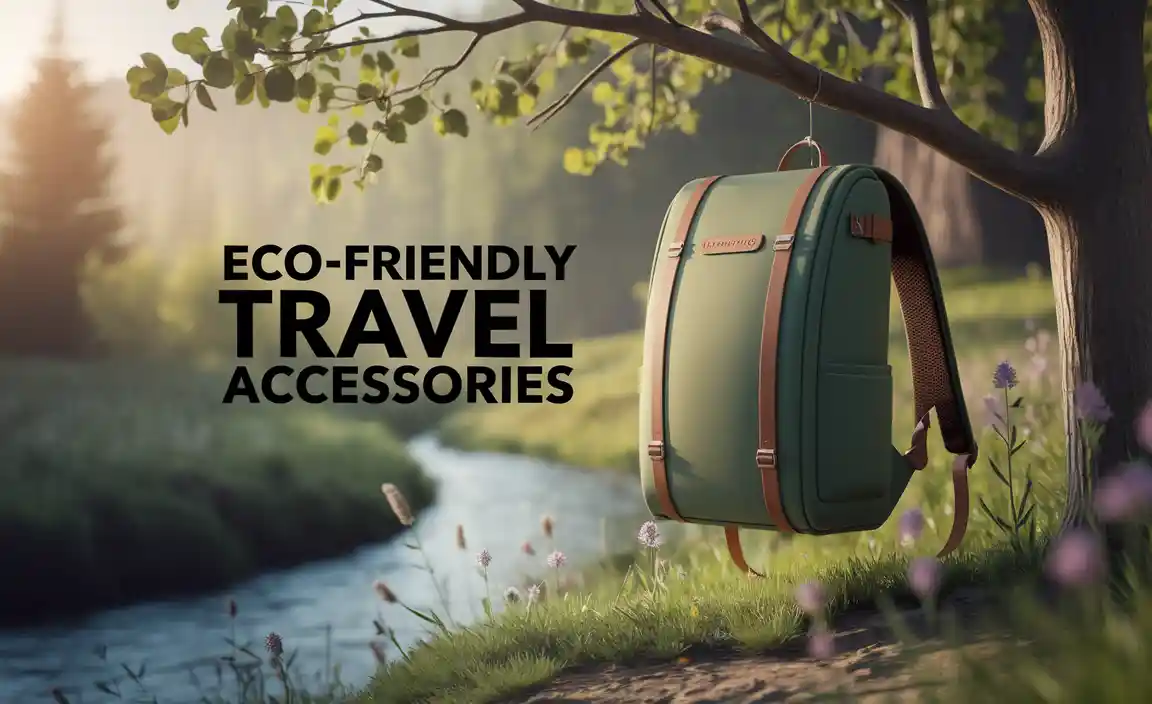Planning a Barcelona road trip base? This guide offers essential tips for a smooth, enjoyable adventure, covering everything from choosing your base and packing like a pro to navigating local transit and exploring hidden gems. Get ready for a stress-free and memorable trip!
Dreaming of sun-drenched plazas, vibrant tapas bars, and the stunning architecture of Gaudí? A road trip to Barcelona sounds absolutely dreamy! But like any trip, the planning can sometimes feel a bit daunting, especially when it comes to figuring out the best “home base” once you arrive. Where’s the easiest place to stay with your car? Which neighborhoods offer the best access to everything you want to see and do? Don’t worry, we’ve all been there. This guide is here to make sure your Barcelona road trip isn’t just a dream, but a perfectly executed reality. We’ll cover the must-know tips to set you up for success, from finding your ideal spot to making the most of your journey.
Why a “Base” Matters for Your Barcelona Road Trip
When you’re embarking on a road trip, your “base” isn’t just a place to sleep; it’s your launchpad for exploration. For Barcelona, choosing the right home base is crucial because the city itself is a treasure trove of experiences. Having a convenient base minimizes travel time within the city, reduces stress about parking, and allows you to immerse yourself more deeply in the Catalan capital. Think of it as your command center for adventure. A good base means you can easily access public transport, find delicious local food, and get back to a comfortable spot after a long day of sightseeing, all without the headache of constantly reorganizing your belongings or searching for elusive parking spots.
Choosing Your Barcelona Road Trip Base: Key Considerations
Finding the perfect spot to park your car and rest your head in Barcelona requires a bit of thought. It’s not just about proximity to attractions, but also about convenience, safety, and your personal travel style. Here’s what to keep in mind:
1. Parking: The Big One
This is often the biggest concern for road trippers. Barcelona, like many European cities, has narrow streets and a high volume of traffic.:
- On-Street Parking: This can be incredibly difficult to find and often comes with strict time limits and meters. It’s generally not recommended for an extended stay.
- Public Parking Garages: Much more reliable but can be expensive. Look for garages that offer daily or monthly rates if you plan to stay for a while. Some hotels offer parking as an amenity.
- Accommodation with Parking: Your best bet is to book accommodation that explicitly offers private parking. This is a game-changer for peace of mind.
2. Neighborhood Vibe
Barcelona is a city of distinct neighborhoods, each with its own character. Your ideal base depends on what you’re looking for:
- Eixample: Known for its grid-like streets, upscale shops, and modernist architecture (including Gaudí’s masterpieces like Sagrada Familia and Casa Batlló). It’s well-connected and offers a more refined experience.
- Gothic Quarter (Barri Gòtic): Historic, charming, and full of narrow, winding streets. It’s very central and atmospheric, but parking can be a nightmare, and it can get crowded. Consider staying on the edge and walking in.
- El Born: Trendy and bohemian, with a great mix of boutiques, art galleries, and tapas bars. Close to the Gothic Quarter and Parc de la Ciutadella.
- Gràcia: A more local, village-like feel with charming squares and independent shops. It’s a bit further out but offers a more authentic neighborhood experience.
- Barceloneta: If you want to be near the beach, this is your area. It’s lively and offers access to seafood restaurants and the seaside promenade.
3. Proximity to Public Transport
Even with a car, you’ll likely want to utilize Barcelona’s excellent public transport system (metro, buses, trams) to explore the city center and avoid parking hassles. Ensure your base is within a short walk of a metro station.
4. Amenities and Comfort
Consider what’s important to you after a day of exploring. Do you want easy access to supermarkets, pharmacies, cafés, or restaurants? Look for accommodations that offer the comfort and amenities you need to recharge.
Sweet Spots: Recommended Areas for Your Road Trip Base
Based on the considerations above, here are a few areas that tend to work well for road trippers setting up a Barcelona base:
Eixample (Especially the parts further from the very center)
Why it’s great: Wide avenues, more potential for hotel parking or quieter residential streets with parking garages. It’s a hub for Gaudí’s iconic works and has plenty of shops and restaurants. It’s also very well-connected by metro.
Gràcia
Why it’s great: Offers a slightly more relaxed pace and a strong local feel. Streets can be narrower than Eixample, but there are more residential areas with potential for garages. It boasts beautiful squares and a vibrant culinary scene. You’ll likely need the metro or a bus to reach the main tourist sights, but that’s part of the charm.
Poblenou
Why it’s great: A revitalized industrial area that’s become very modern and trendy. It offers a good balance of new developments with modern apartment buildings that might have better parking facilities. It’s close to the beach and has a growing number of excellent restaurants and coworking spaces. It’s well-connected by metro to the city center.
Accommodation Options for Your Barcelona Base
The type of accommodation you choose can significantly impact your road trip experience. Here’s a breakdown:
Hotels with Parking
This is often the most straightforward option. Many hotels, especially larger ones or those slightly outside the most congested tourist zones, provide on-site or nearby parking. Always double-check directly with the hotel before booking.
Apartment Rentals (Airbnb, Booking.com, etc.)
Renting an apartment can offer more space and a kitchen, which is great for saving money on meals. When booking an apartment, specifically look for listings that mention “parking” or “garaje.” Some may offer private parking, while others might be near a public garage you can pay for.
Consider Hostel Private Rooms
If you’re on a tighter budget but still want some privacy, some modern hostels offer private rooms. While less common, it’s worth checking if any offer parking solutions or are located near affordable garages.
Navigating Barcelona with Your Car: Key Tips
Once you’ve established your base, driving within Barcelona can be a different challenge altogether. Here’s how to manage:
1. Understand the ZBE (Low Emission Zone)
Barcelona implements a Low Emission Zone (Zona de Baixes Emissions – ZBE) to improve air quality. During certain hours on weekdays, traffic is restricted for high-emission vehicles. It’s crucial to check if your vehicle meets the criteria or if you need to register it. You can find information on the official Ajuntament de Barcelona website.
2. Parking Rules and Signs
Pay close attention to parking signs. Blue zones (zona blava) are paid parking with time limits, while green zones (zona verda) are usually for residents or have stricter time limits for non-residents. Yellow lines indicate no parking at all. Fines can be hefty!
3. Use Navigation Apps Smartly
Apps like Google Maps or Waze are invaluable, but they don’t always account for real-time parking availability. Look for apps that show parking garages and their prices if possible.
4. Consider Leaving the Car at Your Base
For many days of your trip, especially when exploring the dense city center, it might be easiest (and cheapest) to leave your car parked at your accommodation and use public transport, taxis, or even walk.
Essential Packing for Your Barcelona Road Trip
Beyond your clothes and toiletries, a few specific items can make your road trip to and around Barcelona much smoother. Think practical and comfortable!
Comfort Essentials
- Comfortable Walking Shoes: You’ll be doing a lot of walking, so good footwear is non-negotiable.
- Lightweight Daypack: For carrying essentials like water, a camera, snacks, and any souvenirs.
- Reusable Water Bottle: Stay hydrated without constantly buying plastic bottles.
- Travel Pillow (for the drive): Make the journey to Barcelona more comfortable.
Vehicle & Navigation
- Car Charger/Power Bank: Keep your phone and GPS devices charged on the go.
- Physical Map: As a backup in case of GPS failure or patchy signal.
- Vehicle Documents: Ensure your registration, insurance, and driver’s license are up-to-date and easily accessible.
Personal Care for All Travelers
Travel can sometimes present unexpected needs for personal care. For ultimate comfort and convenience on a road trip, especially with children or for adults who may require them for health or extended travel, packing discreet and reliable personal care items is a smart move. Think about bringing along products like:
- Adult Diapers/Protective Underwear: For extended drives, unpredictable bathroom access, or for peace of mind during long days of touring. Brands offering discretion and absorbency are key.
- Child Diapers/Pull-Ups: Essential for families traveling with young children, ensuring comfort and preventing accidents, especially during car journeys or when sightseeing away from a readily available restroom.
- Wipes and Hand Sanitizer: For quick clean-ups on the road and at rest stops.
Having these items readily available can significantly reduce stress and contribute to a more relaxed travel experience for everyone in the vehicle.
Making the Most of Your Barcelona Base: Day Trip Ideas
Once settled, your Barcelona base is perfect for exploring not just the city but also the surrounding region. Consider these day trips:
Montserrat Monastery
A stunning mountain retreat with a Benedictine monastery. The drive is scenic, and the views are breathtaking. It’s about an hour’s drive from Barcelona.
Sitges
A charming coastal town famous for its beautiful beaches, whitewashed buildings, and vibrant atmosphere. It’s a popular day trip and offers a relaxed seaside escape.
Girona
A historic city with a well-preserved medieval quarter, a beautiful cathedral, and colorful houses along the Onyar River. It’s a bit further but easily accessible by car and offers a different glimpse of Catalan culture.
How to Plan Day Trips from Your Base
- Check Road Conditions: Use apps or local news to see if there are any road closures or significant traffic.
- Factor in Parking: Research parking options at your destination. Some smaller towns might have limited parking.
- Start Early: To maximize your time and beat crowds, aim to leave your base in the morning.
- Pack Accordingly: Bring water, snacks, and layers of clothing, as weather can change.
Understanding Barcelona’s Public Transport
Even with a car, understanding Barcelona’s public transport is key to a stress-free trip. This will help inform where you might want your base to be.
The Metro System
Barcelona has an extensive and efficient metro system. It’s the quickest way to get around the city, connecting most major attractions. You can purchase single tickets, a T-Casual card (10 journeys) for individual use, or a T-Familiar card (8 journeys) that can be shared among people.
Buses and Trams
Complementing the metro, buses cover areas the metro doesn’t reach. Trams are also part of the network, particularly useful for certain districts.
Taxis and Ride-Sharing
Plenty of black and yellow taxis are available. Ride-sharing apps also operate in the city, offering another convenient option for getting around, especially late at night or when public transport isn’t ideal.
Integrating Your Car with Public Transport
A common strategy is to park your car at your accommodation or a designated parking garage near your base and then rely solely on public transport or walking to explore central Barcelona’s tourist zones. This avoids the headache and cost of parking in busy areas.
Table: Barcelona Neighborhoods at a Glance for Road Trippers
Here’s a quick comparison to help you choose your ideal base:
| Neighborhood | Vibe | Parking Potential | Public Transport Access | Pros for Road Trippers |
|---|---|---|---|---|
| Eixample | Elegant, Modernist, Upscale | Moderate (Garages, some hotel parking) | Excellent | Central, good infrastructure, iconic sights nearby. |
| Gothic Quarter | Historic, Bustling, Charming | Very Low (Difficult, expensive garages) | Excellent | Atmospheric, walkable core, immerse in history. (Best to stay on edge or use transit) |
| El Born | Trendy, Bohemian, Artsy | Low (Limited garages, some hotel parking) | Very Good | Great for dining and culture, close to Gothic Quarter. |
| Gràcia | Local, Village-like, Relaxed | Moderate (More residential street parking, garages) | Good | Authentic feel, charming squares, local life. |
| Poblenou | Modern, Coastal, Hip | Good (Newer buildings, potential private parking) | Good | Beach access, modern amenities, less frantic than center. |
Frequently Asked Questions about a Barcelona Road Trip Base
Q1: Is it difficult to drive in Barcelona with my car?
Yes, driving within the city center can be challenging due to narrow streets, heavy traffic, pedestrian zones, and complex one-way systems. Parking is also very difficult and expensive. It’s generally recommended to park your car at your accommodation and use public transport for getting around.
Q2: Where should I park my car if my accommodation doesn’t have parking?
Look for public underground parking garages (aparcaments). Many are located throughout the city, though prices can vary. Websites like Parkopedia can help you find garages and compare prices.
Q3: What are the best times of year for a Barcelona road trip?
The shoulder seasons—spring (April-May) and autumn (September-October)—offer pleasant weather, fewer crowds, and more reasonable accommodation prices compared to the peak summer months.
Q4: Do I need an International Driving Permit (IDP) for Spain?
If your driving license is not from an EU country, you might need an International Driving Permit (IDP) to drive in Spain. It’s always best to check the requirements for your specific nationality before you travel.
Q5: How much does parking typically cost in Barcelona?
On-street metered parking can range from €2-€4 per hour. Public parking garages can cost anywhere from €20-€35 per day, depending on the location and duration of parking.
Q6: Are there any toll roads when driving to Barcelona?
Depending on your route, you may encounter toll roads (autopistas de peaje). These are generally well-maintained and can offer faster travel times. You can find more information on Spanish toll roads and potential alternatives on sites like Abertis Mobility.
Conclusion
Planning your Barcelona road trip base is the first step towards an incredible Catalan adventure. By carefully considering parking, neighborhood vibes, and accommodation options, you can set yourself up for a comfortable and convenient stay. Remember, the goal is to minimize travel stress and maximize enjoyment. Utilize the city’s fantastic public transport once you’ve secured your vehicle, and don’t hesitate to explore beyond the city limits with your car for exciting day trips. With these essential tips in hand, you’re well on your way to experiencing the magic of Barcelona, stress-free and fully prepared. ¡Buen viaje!





